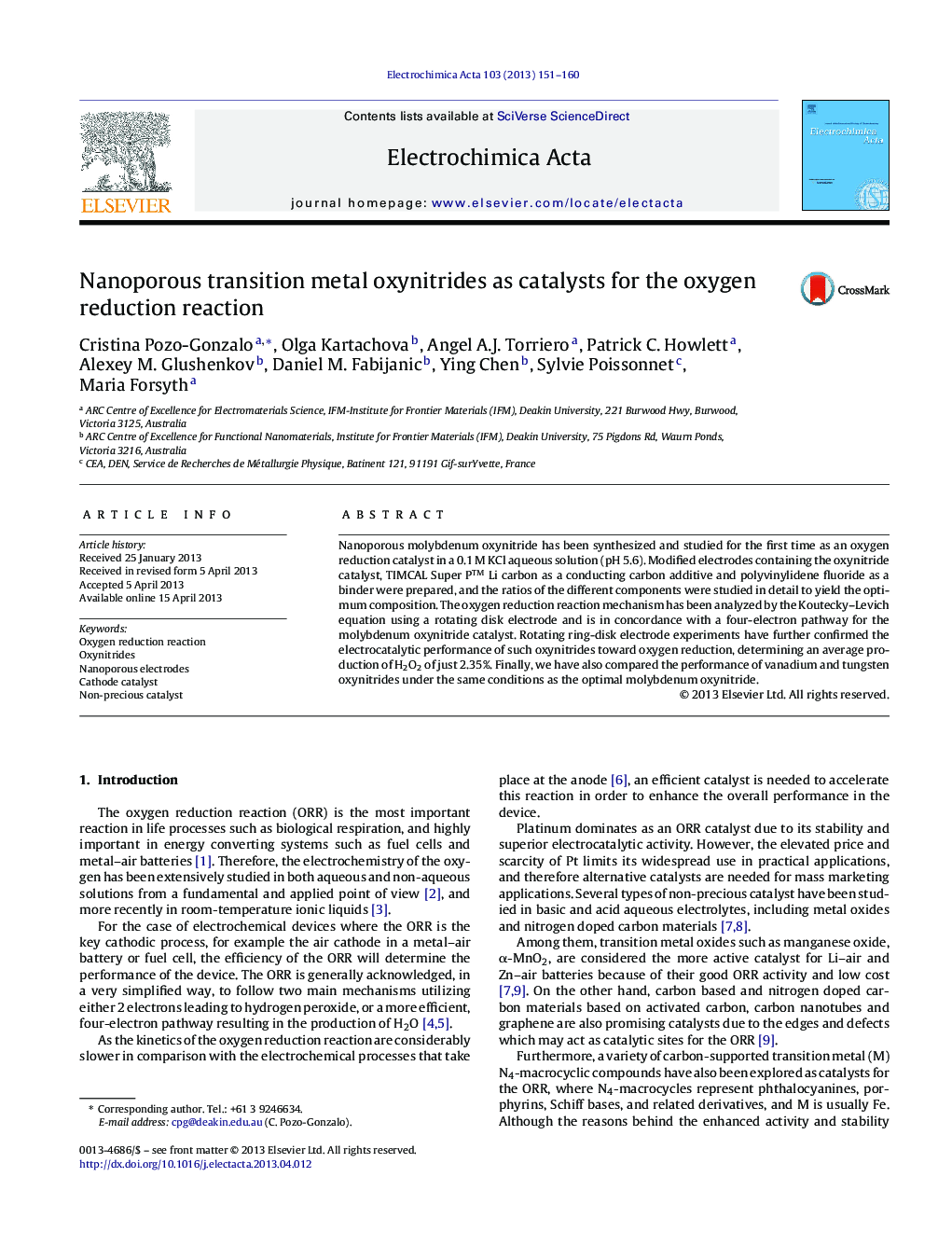| کد مقاله | کد نشریه | سال انتشار | مقاله انگلیسی | نسخه تمام متن |
|---|---|---|---|---|
| 187094 | 459634 | 2013 | 10 صفحه PDF | دانلود رایگان |

Nanoporous molybdenum oxynitride has been synthesized and studied for the first time as an oxygen reduction catalyst in a 0.1 M KCl aqueous solution (pH 5.6). Modified electrodes containing the oxynitride catalyst, TIMCAL Super P™ Li carbon as a conducting carbon additive and polyvinylidene fluoride as a binder were prepared, and the ratios of the different components were studied in detail to yield the optimum composition. The oxygen reduction reaction mechanism has been analyzed by the Koutecky–Levich equation using a rotating disk electrode and is in concordance with a four-electron pathway for the molybdenum oxynitride catalyst. Rotating ring-disk electrode experiments have further confirmed the electrocatalytic performance of such oxynitrides toward oxygen reduction, determining an average production of H2O2 of just 2.35%. Finally, we have also compared the performance of vanadium and tungsten oxynitrides under the same conditions as the optimal molybdenum oxynitride.
Journal: Electrochimica Acta - Volume 103, 30 July 2013, Pages 151–160